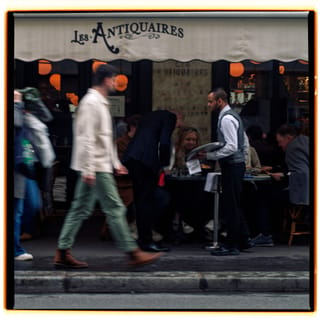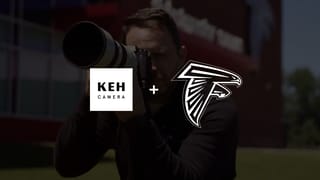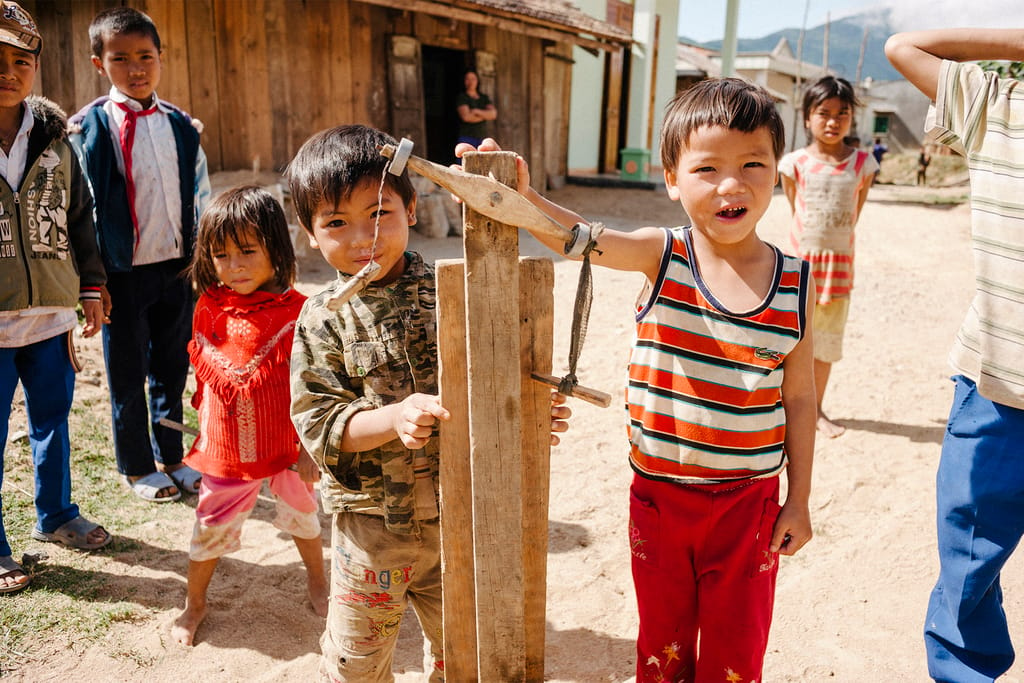
Photography as an art form is all about pushing boundaries, and that’s exactly what Jonathan Mehring does. As an award-winning photographer, director, and author, he is most celebrated for his iconic work in skateboard photography. In his book Skate the World, he documents some of the world’s greatest professional skateboarders at some very uncommon spots. His career in skateboard and travel photography has taken him to over thirty countries, capturing not just the sport but the vibrant cultures and landscapes that surround it. His remarkable ability to blend action with storytelling has earned him international recognition, with his work featured in National Geographic and other major publications. Jonathan continues to push the boundaries of skateboard photography, showcasing the art and adventure of the sport across the globe.
Keep reading for our full interview with Jonathan Mehring:
Tell us about yourself and how you got into photography.
Well, I grew up in central VA in a log cabin about a 30-minute drive from Charlottesville. I started skateboarding in 5th or 6th grade when a friend gave me his old board. Mostly, I would skate C-Ville on weekends, or during the week, I’d go to an abandoned tennis court that was two miles down the dirt road from my house. There was a random piece of railroad track there about 4’ long, and I’d drag it out of the bushes and boardslide it. In high school, I took a photography class and fell in love. I went from being a C/D student to getting A’s and B’s and showing up to school an hour early to print in the darkroom. I mostly shot my friends skating even from the beginning, as well as our fine art class assignments. Then, I went to VCU to study photography and later moved to NYC.
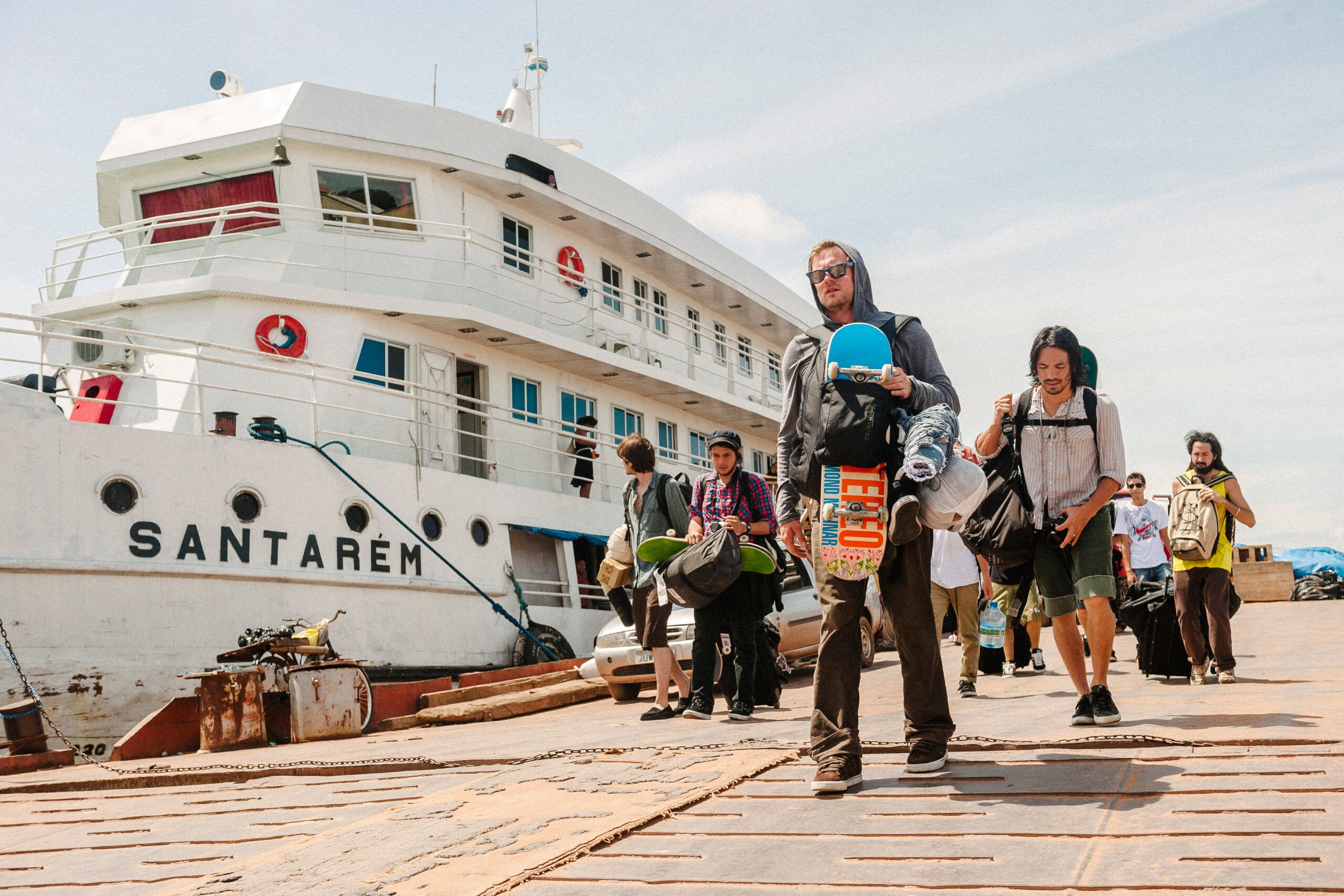
What was your first camera, and how did you get it?
There was a point-and-shoot I had when I was about nine years old that I’d run around in the woods firing off shots of the neighbor’s dog and such. My mother once said, “Well, if there’s one thing he’ll never be, it’s a photographer,” after getting one of those rolls back from processing. Lots of motion blur haha. When I started the photo class in high school, my parents got me a Vivitar camera that I barely remember. But my first “real” camera was a Pentax K1000 with a 50mm and a 28mm, which I got (maybe for Christmas that same year), and it was lightyears better than the Vivitar thing. At some point, I was working at Pro Camera Inc. in Charlottesville and was getting a lot of education about gear and such.
What started you down the path of traveling to remote parts of the world for skateboarding?
I think I’ve always had an attraction to the unknown. I’ve always had to keep pushing over the next hill so to speak. Skating gave me a reason to get out and explore, and photography just expanded that. Once I started working for magazines, they would send me out with a crew of skaters to one of the hotspots like Barcelona or Paris, which was amazing, but I also had the urge to explore the lesser-known parts of the world. I started working at Skateboarder Magazine in 2004, and they gave me a license to travel anywhere, as long as I had a fairly A-list group of skaters. I ended up just pushing for wild trip ideas and pitching to sponsors. Eventually, I figured out a formula that kinda worked and would get together groups of random pro-skater friends and head out to cities no one had seen in the pages of a skate magazine.

How much gear are you packing on these trips?
It was a learning process. In the beginning, I packed way too much and it got lighter over the years. At first, I had a huge backpack with three strobes and two camera bodies (a Nikon F5 and a Hasselblad 500c) with several lenses for each. Eventually, I ended up with a hernia and had to downsize. I sold the Hassy and kept it 35mm.
Once digital came in, it got easier. On the Trans Siberian Railway trip, I had a Canon 5D, a Canon fisheye, 28mm, 50mm, and 85mm, two or three-speed lights, Pocket Wizard remotes, and a Canon 1D for sequences. I also had two small light stands and some extra batteries, and I think that was it.
If you could only have two camera bodies, what are you picking?
An Arri Alexa LF and a Digital Hasselblad, then sell ‘em!
Is there a trip that stands out to you as your favorite? Why?
This is tough, but I think the top three are Vietnam, The Amazon, and Trans Siberian Railway. Vietnam by motorbike might be my favorite. Not only did we have to learn to ride motorbikes, but we drove them unsupported for over 1500 miles from Hanoi to Saigon over the course of a month. Usually, the trips where everything went as planned were actually the least interesting. In Vietnam, we all broke down at one point or another. Jerry Hsu and I both crashed our bikes, and each night, we had no idea where we would be staying or how far we would make it riding, at one point, we had days of rain and had to just power through as much as we could take to try to get to clear weather, and we had to find spots to skate on top of it all. That all worked out to be a very adventurous trip.
These two photos are amazing. Can you tell us the story of how you got those shots?

Jake Johnson – Frontside Kickflip across log gap.
There used to be this annual photo contest put on in Rotterdam, Holland, in conjunction with a big skate comp. I gathered a crew together to go out and try our hand at the photo side of things. The concept was that we each had a week to skate around Rotterdam and come up with the best skate image we could. Then, there was a juried art show at the end of the week. On our first day of scouting, we found this giant wooden ship, which was being built as a historical reproduction. It was behind a fence in the shipyard, but we asked the security guard if we could skate it. He referred us to the project manager, who happened to be an old skater. He was happy to oblige and even had his workers help us by moving giant logs around with their cranes. The shot of Jake was taken from the roof of the crane towering around 60 or 80 ft over the dock. I had to climb out of the hatch and lay down on top with nothing holding me in place. I used a Nikon D3 with a 24-70 f/2.8 lens. My settings were probably 1/1000s, f5.6 or so.
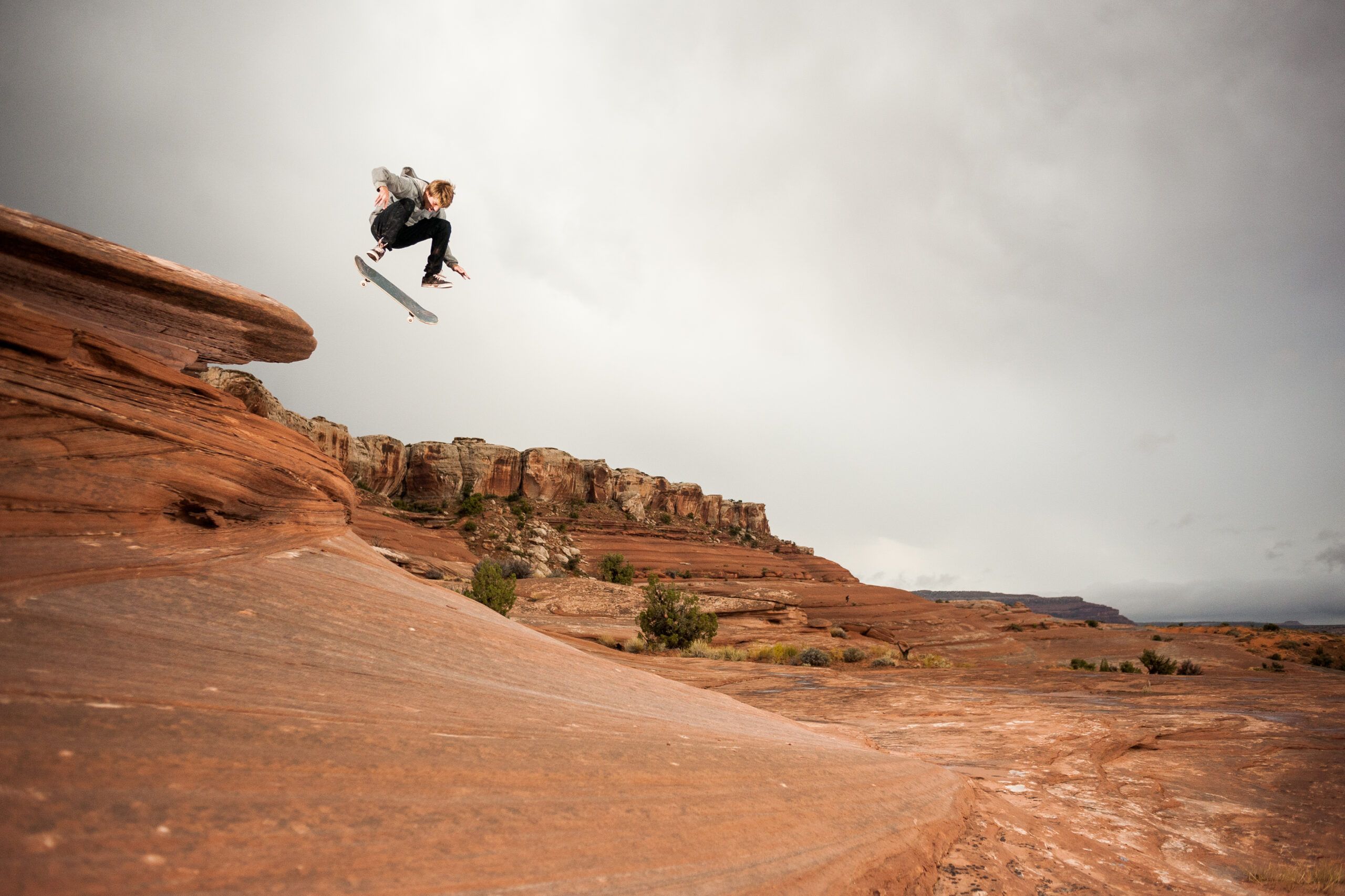
Aaron “Jaws” Homoki – Kickflip on rocks
This was a wild trip that was years in the making. A friend claimed that there were rocks out in Utah that were so smooth that they were skateable. There was an old shot by Lance Dawes from several years earlier of Jeremy Wray skating a rock in Arizona, so I thought it would be cool to find something else like that, but maybe it could be in a location with more to skate than one single rock. I scouted for a week, made a camping trip out of it, and found absolutely nothing. Then I asked a mountain biker we happened across if he knew anywhere smooth enough to skate on. He said there was one possible place and drew directions for me on a napkin. Sure enough, it was good! A few months later, I was heading out with the I-Path skate team, camping in the desert, and skating rocks during the day. This shot of Jaws happened as a massive storm front was barreling towards us down the canyon. I was in such a hurry that I grabbed my 28mm lens instead of my go-to 50mm. I didn’t even realize until afterward but it actually made the shot. Typically, I would never have used a 28mm to shoot skate action, but because of the rural landscape we were in, it actually enhanced the shot quite a bit. Moments after this frame, the wind blew my SB-28 speedlights off the rock, smashing one on the ground and pelting us with sand and rain. We scrambled to safety and had to return for him to do the trick. My camera was a Nikon D3, probably set to 1/250th, f5.6, ISO 200 or so.
How did this all turn into the Skate the World book?
Skate the World was a long time coming. I linked up with an editor, Susan Hitchcock, at a Christmas party back in 2008. I had no idea she worked at National Geographic, but she kept asking me about traveling and skating. I’d just returned from Kazakhstan, and she asked if I had enough material for a book. Soon, I was in a meeting at the Geographic and way over my head. I hadn’t really ever had a proper client meeting, much less fleshed out the book’s message. We kept the convo going, and a couple of years later, I was able to put together a better pitch with ‘skateboarding as a global culture’ for the angle. That got Nat Geo on board, but then they said I needed a sponsor to help pay for it. That took a few more years until Levi’s entered the skateboarding arena. I did some advertising work for them, and they ended up partnering with Nat Geo to make the book happen. In total, it was 7 years of keeping in touch with Susan and keeping the project in the back of my mind, the work included over 15 years of magazine work edited down to the very best, plus several contributing photographers to help fill in the gaps.
Can you talk about the importance of publishing your work?
Publishing allows you to share your work with your audience and opens opportunities for new people to see it. Every photographer needs validation at some point, and getting published is a way to do that.
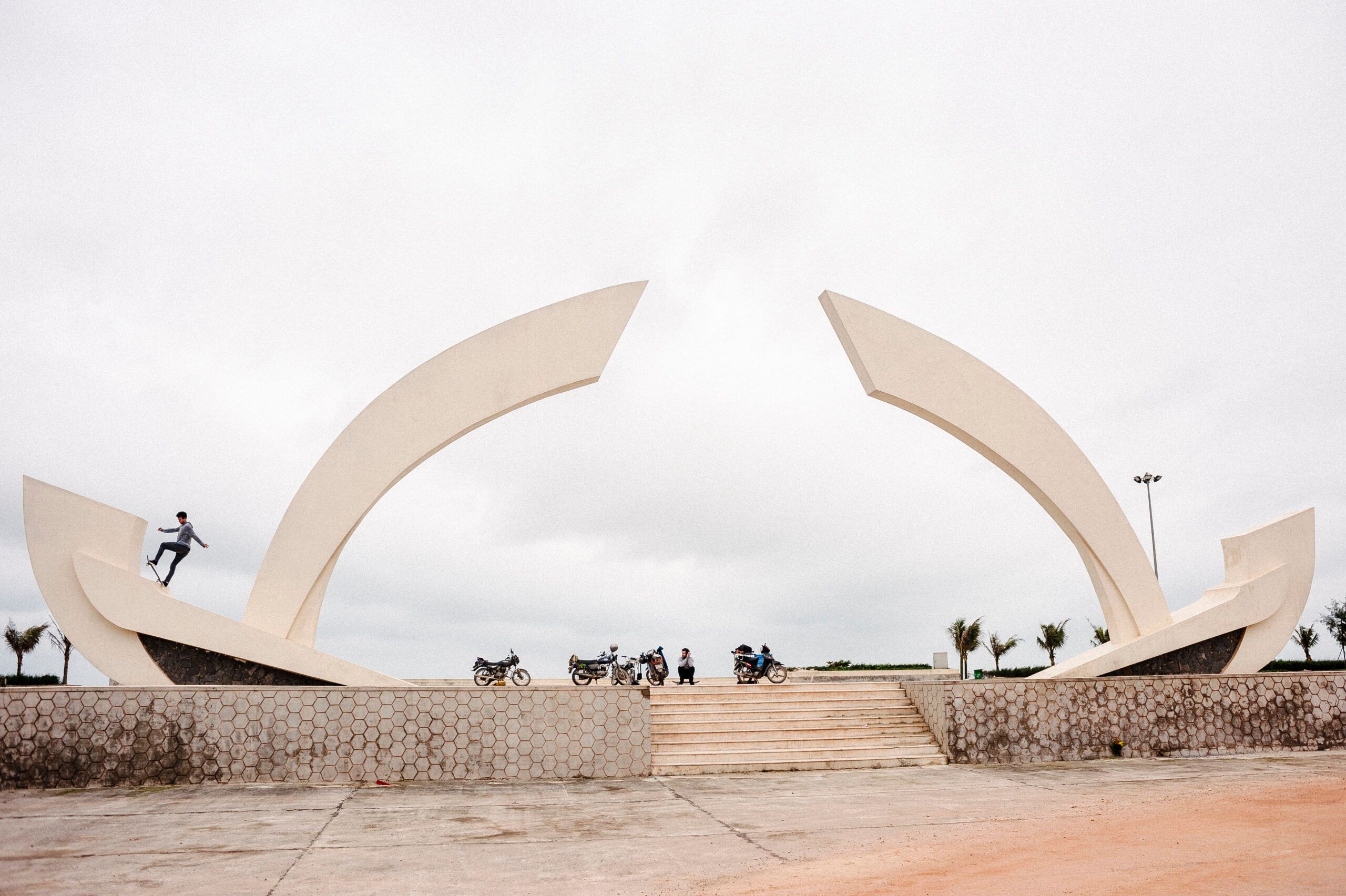
Michael Mackrodt — frontside blunt. Dong Hoi, Vietnam
In your experiences, what similarities do you see between communities across cultures, and what does this say about us as humans?
What I’ve found is that we’re all remarkably similar. The skateboard is a great unifier. If you share skateboarding in common, then whatever culture you come from really doesn’t matter, you’re going to have a great deal in common and may well become good friends. We met a skater kid in Morocco on my first trip there in 2006. We hit it off, and he had us all over to his house for dinner one night. Years later, in 2018, I was back in the same town with Levi’s on a commercial job, and who ended up being our local guide/fixer? Ali — the same guy from years before. It felt like we’d seen each other just a few weeks before. Nothing had changed, except he was now running the local skate shop and hosting surfers and skaters in the town on a regular basis.
How did your view of skateboarding and global culture change over the seven years working on Skate the World?
That’s a good question. When I was starting out, and really up until that chance encounter, I really just wanted to photograph the best pros doing the best tricks on the best spots. But once I had Nat Geo in the back of my mind, I started paying more attention to skate culture and foreign cultures and how they play off each other in complementary and contradictory ways. Some cultures eschew skateboarding as a bad boy sport, while others see it as a wonderful opportunity to engage the youth. Skate culture, as I said before, is pretty uniform across the globe, so it leads to great relationships regardless of cultural or economic background. So, to answer the question, it made me look at skating through a deeper lens and take stock of what we were doing and where in a more valuable way.
You’ve made a career out of photography. Is there one piece of advice you’d give young photographers to help them start their careers?
Follow your passion. You have to be hungry, driven, and have an insatiable need to photograph.
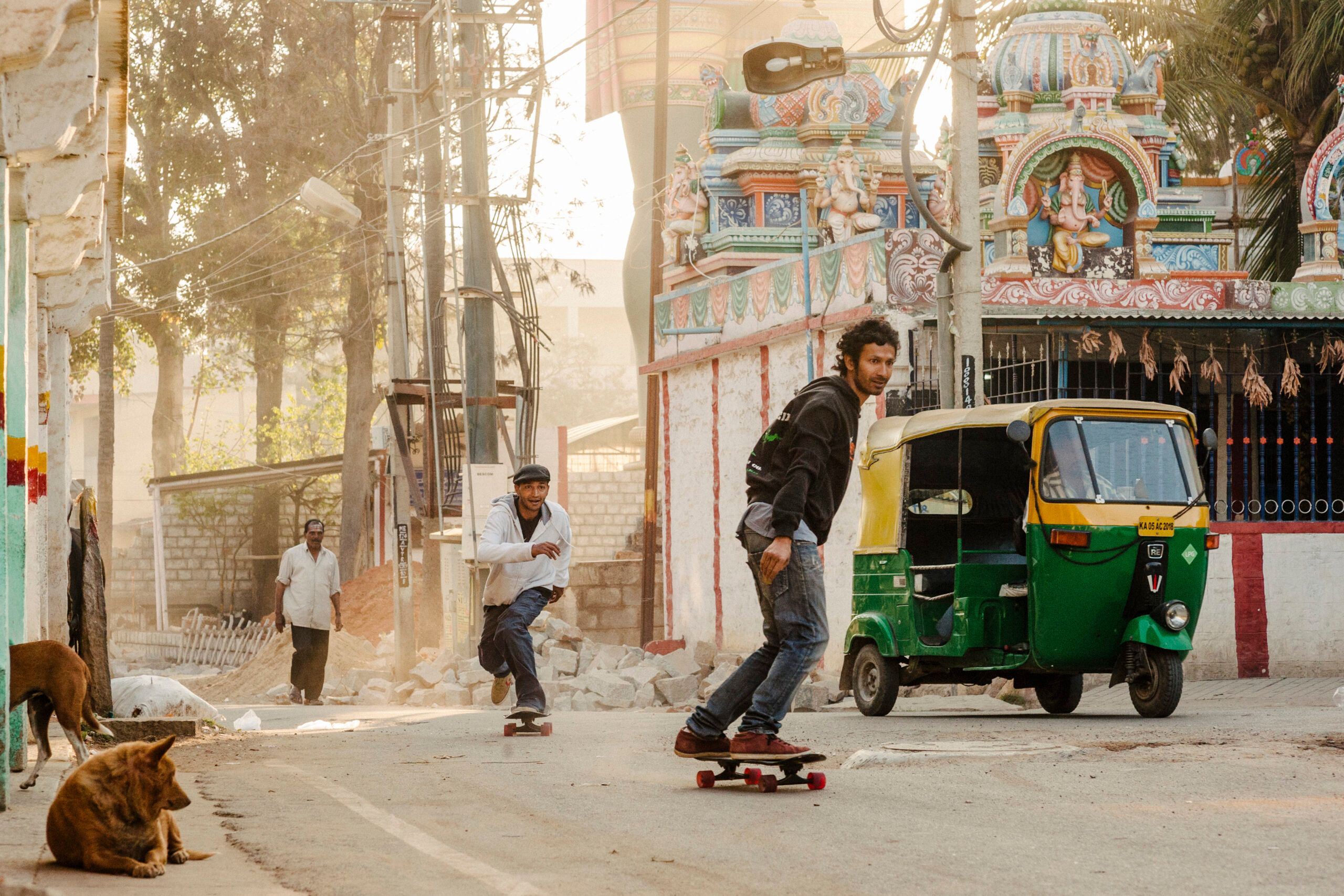
Holy Stoked founders Shake and Soms in Bangalore, India
Want to check out more of Jonathan’s work? Connect with him at:

